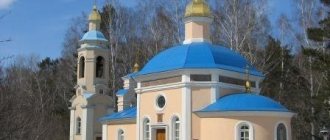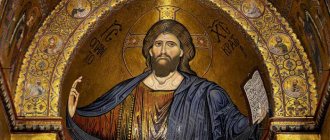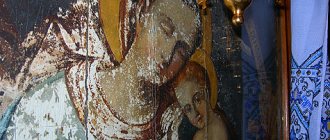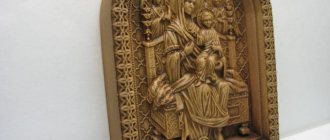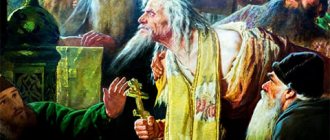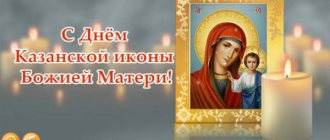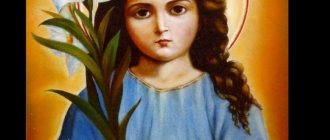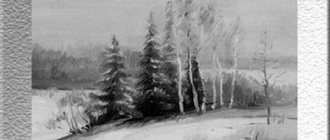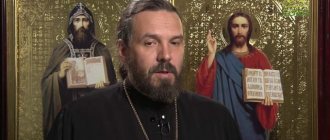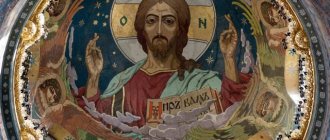From the editor:
The name of the Ural entrepreneur and public figure Evgeny Roizman is well known in Russia. First of all, he is associated with the activities of the Drug-Free City Foundation, which he founded, and political influence in Yekaterinburg. Much less is known about his main hobby - collecting Old Believer icons. Evgeny Roizman not only created the first private museum of icons in Russia, saved hundreds of works of church art from theft or destruction, but also contributed to the dissemination and scientific recognition of the term “Nevyansk icon”. The currently published material consists of various interviews and stories by Evgeniy Roizman dedicated to Old Believer icons, their connoisseurs and guardians.
Private Museum "Nevyansk Icon"
— We opened the museum in 1999. This was the first private museum of icons in Russia. The idea of opening such a museum was suggested to me by the famous Ekaterinburg collector Yuri Mikhailovich Ryazanov.
I've thought about this a lot. Icons occupied half of my apartment; they were in the office, with numerous friends, and in several restoration workshops. Negotiations with the authorities to provide me with premises for the museum, which began back in 1997, dragged on. So I've been running around. And at that time, fate smiled at me - Anatoly Ivanovich Pavlov gave me the first floor of his mansion and two more rooms in addition.
Everything went in. In one room, Max ( Maxim Petrovich Borovik , director of the museum) and I made a storage room, the other was occupied by restorers. After the opening, when there were more icons, the restorers were relocated and the storage facility was emptied. They hung everything according to their own understanding. The question of hanging was very difficult. Tell me how to hang it? By plot? Chronologically? By sections? For workshops? Unclear. And I had no experience. We did everything on a whim. We started the exhibition with the earliest ones and gradually moved on to the later ones. Time has shown that we were right. The exhibition turned out to be stylish and flexible. The most important thing is that you could work with her.
The Nevyansk icon existed documented from 1734 (the “Our Lady of Egypt” icon until 1919 (Savior Almighty). In fact, we have earlier Nevyansk icons, and we know about the last secret icon painters in the 1950s. The phenomenon that we call "Vysoky Nevyansk", practically did not cross the line of the 18th century. With the accession of Alexander I, with the spread of Edinoverie and the rise of industry in the Urals, Nevyansk icon painting entered a new stage. At the orders of wealthy factory owners, tax farmers and gold miners, Nevyansk craftsmen from the Bogatyrev dynasty created luxurious masterpieces until the end of the 1830s, but real, strict and earnest Nevyansk icons remained in the 18th century. That, in general, is all.
Imagine: the Urals, little Nevyansk, an Old Believer center, several workshops, just a hundred years of icon painting. Life is in full swing: now raids, now searches - they were hiding in hermitages. They didn't write for sale. Only on order (if there was no order, they didn’t write at all). The icon painters are respected, all literate. The customers are also literate, sophisticated and very rich Old Believers. They knew what they wanted to get for their money. In addition, all sincere believers are ready to risk fire for their faith. Literally. This is where the phenomenon comes from - the Nevyansk Icon. There are few Nevyansk icons. Sometimes we are forced to take what we know cannot be restored. Just because of the fragments. Soon this won't happen either. What is the essence of the museum? Don't let the phenomenon disappear
I think we succeeded. In general, the museum is alive. The entrance is free. There are a lot of visitors. In the first five years - 150 thousand people. We are always doing something. We go on expeditions, publish books and albums, and hold exhibitions. The first exhibition of the museum outside of Yekaterinburg took place in May 2005 in Ferapontovo. Moreover, I am very pleased that she was in Ferapontovo. A huge number of people passed through in 2.5 months. Then the icons moved to Yaroslavl for several months. There was a very strong resonance.
They gave us many icons. Among the donors are Governor Eduard Rossel , my friend and companion Vadim Churkin, my comrade and kind man Igor Altushkin, many Yekaterinburg and Moscow collectors and restorers. Many thanks to all of them!
I really love the Museum. I think this is the best thing I've done in my life. And perhaps most important.
To paint the Nevyansk icon, gold leaf was applied to the prepared wood.
But first, we should talk about the main points of the technology of painting icons. The history of the creation of icons is very interesting. There is a website of the Ural Publishing House where you can find out any information you need about the Nevyansk icon.
Official website of the Ural Provincial Publishing House
At the very beginning, they prepared the icon. They took a block of wood and cut down a block on both sides of the core. The core is the very middle of the block. After this, they were dried for several years and then the surfaces were treated.
Then the so-called “ark” was cut out from the front side along the perimeter, so that the margins rose above the center. The ark is a small depression, but it was not always made.
Icon board shape
Then pavolok - fabric, and a little later paper - was glued onto the base. Gesso was applied to the pavoloka in several layers - this is a creamy mixture. It was made from soap or fish glue. A small amount of hemp oil or drying oil was added to this mixture.
Each layer took quite a long time to dry. The gesso was then polished with a bear's bone or tusk. The drawing of the icon has already been translated from the copybook. The contours were pricked with a needle and powdered with crushed charcoal from a bag.
On gesso, a transfer of a pattern of black dots was obtained. Polyment was then applied to the gesso. Polyment is paint onto which gold sheets were then glued and then polished.
And only after that the artists began to paint the icon. The front side was covered with a protective film of drying oil.
In the photo you can see how, after preparing the place, the artists of the Nevyansk school began to paint the icon. After which the front side was covered with a protective film
Old masters
Kharlampy was extremely revered by our Old Believers. The fact is that the saint, being a zealot of the true faith, had very great authority among the people, and therefore was subjected to all sorts of tortures and executions from his superiors. But all the tricks and evil intrigues were turned against the tormentors themselves. Kharlampy, a strong and generous man, always forgave his tormentors.
When the chief wanted to tear the body of Harlampius with iron cats, his hands became detached and hung on the body of the saint. Kharlampiy took pity on him, and then they became friends again. And hegemon Lucian spat at Harlampius, and Lucian’s head immediately turned 180 degrees. Kharlampy forgave him, and his head turned back. They tried to torture the holy elder in different ways and tied him to a horse. And the horse turned to the tormentors and said in a human voice: “Well, you are fools!” And then they decided to execute Kharlampy. And on the night before his execution, the elder was honored with a conversation with the Savior. And the Savior asked the condemned man: “Friend Harlampius, what do you want me to do for you?” Harlampy answered simply: “God, where will I be buried, may that land be fertile forever and know no troubles.” “Have it your way,” said the Lord. And in the morning, when they came to take Kharlampy away for execution, he, without waiting for this solemn moment, took it and quietly died his own death. At the age of 113! Can you imagine the message to ill-wishers?!
In agricultural regions, Kharlampy was revered as a guardian of the harvest, but here, in the mining Urals, he protected from sudden death without repentance. There are more than 90 faces on this icon. All are in relief, coated with white in many layers and finished with the finest “selection”, this is the technique used by icon painters. The clothes are mostly richly ornamented, and the faces, for the most part, are characteristic. Any of the faces, except the central one, can be covered with a match head. But when the angels take the soul of Harlampy and lift it up to the Lord, the face of the soul is much smaller than a match head, look.
This icon, despite its very high level, does not fall out of the general context of contemporary Nevyansk icons. That is, this level was the rule, not the exception.
Most of the population of the Urals are Old Believers, among whom were talented artists
The Nevyansk icon is Old Believer and therefore evokes associations with chapels. Most of the population of the Urals are Old Believers who fled to these places due to persecution by the royal and church authorities. It was among these people that there were many talented artists and icon painters.
In the inventory books of 1702, the icons were noted as state property after the transfer of the Nevyansk plant to Nikita Demidov.
Nikita Demidov owned the Nevyansk plant, along with the Nevyansk icons of master icon painters
The entry in the book read:
“In the sovereign’s courtyard,” in the blast furnace and hammer shops, “and in other places,” there were nine images on boards without frames. These were the three Saviors: “Almighty”, “On the Throne” and “Not Made by Hands”; "The Resurrection of Christ with the Twelve Feasts", Theotokos, the Annunciation, John the Baptist, St. Nicholas the Wonderworker, Our Lady of the Burning Bush with the Twelve Feasts.
All the icons went to Demidov along with the factory. It can be assumed that these icons were of local origin.
Nevyansk plant at the end of the 18th century. All this belonged to Nikita Demidov
The census book indicated the name of industrial man Grigory Yakovlev Ikonnik, 50 years old. Perhaps it was this person who was engaged in icon painting, which is confirmed by the data of the Landrat census of the Nevyansk factories.
At that time, this was the only point that speaks of the earliest evidence of the existence and work of icon painters. Moreover, there is evidence not only about Nevyansk, but also at Ural factories in general.
Also in the census book there is evidence of Gregory and Semyon Yakovlev, who may have been brothers. Apparently, they were icon painters, because the sons of Semyon in the Landrat census of the plant are named as the children of Ikonnikov.
1717
by this year Nevyansk had become one of the largest settlements in the Urals
But most likely their father did not have time to pass on his icon painting skills to them, because he died quite early.
By 1717, the Nevyansk plant consisted of 300 households. And after which it turned into one of the largest settlements in the Urals. Since 1731, Ivan Kozmin Kholuev was engaged in icon craftsmanship at the Nevyansk factory. In his own words, he studied icon painting somewhere in the Nizhny Novgorod region.
The documents also contain information about other icon painters of that time. Information about the first master icon painters of the mining and manufacturing Urals forces us to turn our attention to the masters who were considered the founders of icon painting in factories.
A Frenchman began to study this issue in the 1920s. He presented his results at a meeting of the Ural Society of Natural History Lovers.
The Frenchman visited many chapels and private houses in the city of Yekaterinburg, at the Nizhne Tagil and Nevyansk factories. He attaches particular value to the fact that he was able to find the third generation icon painter G. S. Romanov, who helped him in this matter.
The Frenchman named four masters of the specified time period. Among them were Father Grigory Koskin, Grigory Peretutov, Father Paisiy and Timofey Zavertkin.
"George"
One serious collector was told that far in the north, in an Old Believer village, a man had a huge plaque - “George” from the 18th century. And so this collector put on a hat with earflaps, waders and went. I traveled for two days by train, then another day on a narrow-gauge railway, then upstream by motorboat. I found this guy almost beyond the Arctic Circle. He bargained, put it on his back and carried it away happy. A few kilometers later he hears stomping: the owner of the icon is running after him with a hefty knife. He caught up, caught his breath and said: “Listen, bro, wait a little!” I'll scrape the gold off my teeth.
Icon
The Nevyansk icon is the most significant and serious brand of the Ural region and at the same time one of the pearls of world culture. The history of its creation and life is attributed to a number of cities, including Nevyansk, Chernoistochinsk, Nizhny Tagil, Yekaterinburg, Verkh-Neyvinsk and other places inhabited by Ural Old Believers.
The Nevyansk icon painting school is considered the pinnacle of Ural mining and Old Believer icon painting. It is distinguished by its originality and the absence of direct analogues among other local letters, does not change the Russian traditions of icon painting and maintains a high level of execution.
The Nevyansk icon belongs to a separate, original branch of Russian church painting, formed at the beginning of the 18th century. Just then, due to persecution by the authorities and the church, the Old Believers began settling the Urals. In their ranks there were many talented icon painters; it was they who began to create the Nevyansk school of painting, which received its name due to the large number of Old Believers icon painters in the city of the same name. The school includes not only those works that were completed in Nevyansk: many local isographers had workshops in other settlements of the Urals, thus their art reached the Southern Urals.
The Nevyansk school differs from other branches of icon painting in its depiction of characteristic landscapes of the Urals with all the geographical details and interesting architecture, in which the urban planning realities of the 18th–19th centuries were used. Also, the Nevyansk icon is distinguished from other creations by the abundant use of gold and the high level of processing of the base.
Chip icon
The wood chip icon (on wood chips) was distributed throughout Russia in huge quantities in the 19th century. It is known that one family made up to six hundred such icons a week. Then they were removed with foil (sometimes they are called subfocal ones, because the icon was not completely depicted, and only faces and hands were visible from under the foil), paper flowers and placed in inexpensive icon cases. Were these icons accessible and inexpensive even then? and are now sold for mere pennies, yet they are very touching and expressive.
Once a Yaroslavl collector gave me a small collection of chipped icons. I see in them a combination of naivety and sophistication, and besides, they remind me of the famous Fayum portrait:
In the second half of the 18th century, the dawn of the Nevyansk icon began
The period of dawn of the Nevyansk icon is the second half of the 18th century and the first half of the 19th century. At this time, 10 icon painters worked in Nevyansk. But by the beginning of the 20th century, only three families were engaged in icon painting, who painted icons to order.
XX
by the beginning of this century, only three families in Nevyansk were engaged in icon painting
The most famous dynasty, who were engaged in icon painting for more than 100 years, were the Bogatyrevs, Chernobrovins and others.
A remarkable role in the formation of the Nevyansk icon painting school was played by the traditions that were laid down by the Moscow Armory Chamber in the mid-15th century. It is known that among the first visitors to the Nevyansky plant were craftsmen from the Moscow, Olonets and even Tula regions.
Therefore, icon painters could focus on a wide range of traditions. They took the iconography of the 16th - 17th centuries as a model. But it took quite a long time to unify the stylistic features and technical and technological techniques.
Nevyansk school - school of icon painting. Its appearance dates back to around 1770. One of the famous icons is the Mother of God of Egypt, painted in the icon painting school.
Icon painted by Nevyansk masters “Our Lady of Egypt”. The approximate date of painting the icon is 1734
During the 18th century, the mining Old Believers had no icons at all. Among the Nevyansk icons, the first was dated 1791. It was the work of I.V. Bogatyrev “Peter and Paul with scenes from their lives.” Unfortunately, the image has not survived to this day.
Nevyansk masters painted icons in the traditions of the icon painting schools of pre-reform Rus'. But then they did not copy old icons, but creatively reworked traditions in which they expressed their feelings and their vision of the world.
Icons were painted differently then; this could be seen in the depth of the icons, in the volume of the faces, in the depiction of the landscape. For example, the icon “The Holy Crucifixion of Our Lord Jesus Christ” from 1799 depicts a tower with chimes, instead of conventional mountains.
Trees, grass, bushes, pebbles - these are all indispensable attributes of Nevyansk writing. You can see this in the photo of the icon.
Nevyansk Icon “The Holy Crucifixion of Our Lord Jesus Christ” 1799
Mineral paints were used to paint icons because they were considered quite durable and did not fade or fade in the sun.
The drawings of the best Nevyansk icons are elegant and flexible. Such an icon is distinguished by its subtlety of writing, elegance and decorativeness. The icon painting school became the most popular at that time.
Masters mastered various methods of background processing. In the drawings of the Nevyansk icon of the 18th century, the influence of the Baroque style, unusual for icons, is noticeable. But from the beginning of the 19th century, features of classicism appeared on icons.
Chest of icons
I saw a chest in Vologda from Misha Surov ( Mikhail Vasilyevich Surov , politician). I grabbed onto it, and Misha had no choice but to give it to me for the museum. A chest is like a chest. Strong, good quality. Closes without gaps, with a lock. Made from icons. From the life-size image of Nikola and from Alexander Nevsky. Moreover, the master who received these icons in the warehouse tried to do it as respectfully as possible. On the front part, Nikola was practically untouched, only the legs were sawed off - they went to the back side, and Alexander Nevsky went to the ends. The chest comes from Upper Vaga.
But the wonderful icon “The Only Begotten Son” - it also comes from Vologda. In 1929, it was given to the school caretaker from the warehouse, and he was ordered to make a school board out of this icon. However, the caretaker carefully hid the icon in the attic, and found some other material for the school board. “The Only Begotten Son” lay in the attic until 2002. The caretaker’s grandchildren found this icon, sold it to a Moscow collector and bought an apartment with the money. Now the icon is in our museum.
LiveInternetLiveInternet
About Nevyansk icon painting - an original phenomenon of Russian church painting, about the artistic significance of the work of famous and unknown talented icon painters, whose works with amazing power and sincerity express the complexity and contradictory nature of the life of the Urals in the 18th-19th centuries.
Unlike the well-known ancient icon painting schools - Novgorod, Pskov, Moscow - the Nevyansk school arose and was formed only in the 18th-19th centuries. Its creators were Old Believers who rejected the church reform of the mid-17th century and fled the northern and central regions of the country. They brought Ancient Rus' with its centuries-old cultural heritage to the Urals.
It is paradoxical that in the Urals the industrial base of young Russia was laid by people who did not accept Peter’s reforms, by those who combined efficiency and daring impulses of creative energy with a commitment to patriarchal ideals. That is why the creators of the new industry and accompanying art (products made of malachite and jasper, cast iron and steel engraving) were at the same time zealous guardians of the artistic traditions of the Russian Middle Ages. Features of originality in the Ural Old Believer icon emerged already in the time of Peter the Great, but it experienced its heyday, stimulated by the rise of industry and the economy of the region, later - in the second half of the 18th - first half of the 19th century.
The concept of “Nevyansk school”, used in relation to the Ural Old Believer icon, is quite arbitrary, but not arbitrary. The city of Nevyansk, which grew from a settlement at a metallurgical plant founded in the upper reaches of the Neiva River at the end of the 17th century, became the Old Believer center of the Urals. He gathered the best icon painters. However, not only icons born in Nevyansk itself should be included in the Nevyansk school. The local isographers, fulfilling various orders - from small home icons to monumental multi-tiered iconostases, set up workshops in other Ural cities, spreading their influence all the way to the Southern Urals.
Icon painting skills passed down from generation to generation, the existence of dynasties such as the Bogatyrevs and Chernobrovins, the presence of favorite iconographic types, characteristic stylistic features and tempera techniques - all this allows us to talk about the Nevyansk icon painting school. It is characterized by elongated proportions of figures, sophistication of poses, and subtlety of writing. The Nevyansk people skillfully mastered all the secrets of craftsmanship and knew how to merge the expressive means of painting into a single whole.
The Old Believer Ural icon gave us examples of a more organic and creative development of Old Russian traditions than, say, the Palekh icon, made “antique,” even if it was intended for the New Believer church. Of course, the attitude of the Old Believers did not remain unchanged. Outbreaks of religious fanaticism gradually faded, the influence of the official church and secular principles of life grew. “A large merchant class conducts extensive trade, and most of the merchants are gold miners. It’s only a pity that almost all of them are Old Believers, or schismatics, however, this does not prevent them from being worthy citizens and people who are not alien to public pleasures,” one of the Yekaterinburg correspondents wrote in 1843 to the editor of the all-Russian magazine “Repertoire and Pantheon”.
Gradually, the Nevyansk icon began to evolve towards decorative art, becoming a luxurious thing, personifying the fabulous capital of the Ural industrialists. Nevyansk icon painting was becoming a thing of the past, but it did not leave without a trace. She had a noticeable influence on the folklore icon, which no longer squandered its creative potential, on local book miniatures, on wood and metal painting, on the entire artistic culture of the Urals.
Akathist to Our Lady 1810-1818
Resurrection of Christ
Icon-tondo of the Only Begotten Son 1814-1818
Simeon Verkhotursky XIX century
Old Testament Trinity
icon of Nikola winter XIX century
Nativity of the Virgin Mary (Ural school, Nevyansk, 1790s) Bashkir State Art Museum named after. M.V. Nesterova
https://nvgorbatova.ucoz.ru/index/uralskaja_ikonopis/0-12
1840
Vetkovskaya
B XVIII-XIX centuries Nevyansk was the center of icon painting in the Urals. The Nevyansk icon is the pinnacle of Ural mining and Old Believer icon painting. Translated from Greek “eikon” means image, image on a wooden board. First, the icon was prepared: a block was cut out of a block on both sides of the core; they were dried for several years and then the surfaces were treated. On the front side, an “ark” was cut out along the perimeter - a small depression, so that the fields rose above the middle (however, the ark was not always made). Pavolok - fabric, later paper - was glued onto the base. Several layers of gesso were applied to the pavoloka - a creamy mixture of chalk, glue (usually fish) with a small amount of hemp oil or drying oil. Each layer was thoroughly dried. The gesso was then polished with bone (bear or wolf fang). The icon's drawing was translated from the copybook: the outlines were pricked with a needle and "powdered" - sprinkled with crushed charcoal from a bag. On gesso, a “translation” of the pattern of black dots was obtained. Then polyment - paint - was applied to the gesso, gold sheets were glued onto it, which was polished, and after that they began directly to paint the icon. The front surface of the finished icon was covered with a protective film of drying oil or glue. The Nevyansk icon is an Old Believer icon and is associated primarily with chapels. Most of the population of the Urals and the Nevyansk Demidov factories are Old Believers who fled here from persecution by the tsarist and church authorities. Among them there were many talented icon painters. The icons were noted among state property in the inventory and transfer books of 1702 during the transfer of the Nevyansk plant to Nikita Demidov. “In the sovereign’s courtyard,” in the blast furnace and hammer shops, “and in other places,” there were nine images on boards without frames. These were the three Saviors: “Almighty”, “On the Throne” and “Not Made by Hands”; "The Resurrection of Christ with the Twelve Feasts", Theotokos, the Annunciation, John the Baptist, St. Nicholas the Wonderworker, Our Lady of the Burning Bush with the Twelve Feasts. All of them went to Demidov along with the plant. These icons were most likely of local origin. In the census book of Verkhoturye and the district for 1710, at the Nevyansk plant in his yard, “industrial man Grigory Yakovlev Ikonnik” is recorded, 50 years old, no wife, son Eremey 22 years old, and three daughters: 13, nine and six years old. It is possible that he was professionally engaged in icon painting, which is confirmed by the data of the Landrat census of the Nevyansk factories in 1717. This is currently the earliest direct evidence of the existence and work of icon painters not only in Nevyansk, but also in the Urals. In the census book of the Ayat Sloboda of 1703, uncultivated industrial people Grigory and Semyon Yakovlev, obviously brothers, are noted. Apparently, they were icon painters, since the sons of Semyon are in the Landrat census of Nevyansk. But their father did not have time to pass on his icon-painting skills to them, probably because he died early (in 1705, the widow and children “moved” to the Nevyansk plant). In the census and allotment books of 1704, the Ayat, Krasnopolskaya settlements and the possessions of the Epiphany Nevyansk Monastery assigned to the Nevyansk plant among the residents of the Ayat settlement, “which were not given to Nikita Demidov for work in the past 1703” (and were assigned in 1704) are recorded industrialist Yakov Frolov with three sons aged from nine to 21 years. “Pays... to the treasury from the trade trade a quitrent: from the fishery trade, osmi altyn, two money per year.” He combined his studies in icon painting with farming. According to calculations, this Yakov Frolov and G.Ya. Sakharov were almost the same age and could be each other’s cousins. It can also be assumed that the cousins studied the icon craft in the Ayat settlement and could improve in it by participating in work on the side. The grandson of Yakov Frolov Arapov, Akinfiy, 21, was noted in the 1732 census at the Nevyansk plant without indicating a profession with the nickname “Ikonnikovs”. Yakov Frolov, who lived in Ayatskaya Sloboda, probably served as an icon painter the needs of the surrounding peasants and numerous visitors and travelers. Gregory, who settled in the Nevyansk plant, according to him, from 1706, satisfied the more demanding tastes of its inhabitants. By 1717, the Nevyansk plant numbered over 300 households and turned into one of the largest settlements in the Urals, second only to Solikamsk and Kungur, and surpassing all other cities, including Verkhoturye. It is reasonable to assume that both named icon painters obviously differed in their level of skill and worked in a traditional manner. It is unlikely that their work was differentiated by customers: Old Believers and adherents of official Orthodoxy. From 1732 and at least until the beginning of 1735, most likely, it was in Nevyansk that Ivan Kozmin Kholuev, by origin the son of a bobyl from the Verkhnyaya Sloboda village of Gorodets, Balakhonsky district, Nizhny Novgorod province. In his own words, he studied icon painting somewhere in the Nizhny Novgorod region, and before appearing in the Urals, he “went to different Russian cities.” From documents of 1790 we know the name of the peasant of the Yalutorovsky district, Ivan Emelyanov, son of Neryakhin, 34 years old - the Old Believer monk Isaac, trained in icon painting at the "Old Nevyansk Factory", where the peasant Fedot Semenov (son) Voronov lived for two years, learned to paint images (approximately in 1778-1780). Then he went to the monasteries, and then returned to the Nevyansk plant, where in 1784-1786. lived with “the peasant Vasily Vasiliev (son) Krasnykh, aka Barannikov... at the writing of images.” The fragmentation of information about the first Old Believers icon painters in the mining and processing Urals forces us to pay attention to the masters considered the founders of icon painting in factories. Studying this issue in the early 1920s. was handled by Suchelle Dulong, a Frenchman and representative of the Red Cross mission. In January 1923, he presented the results in a report at a meeting of the Ural Society of Natural Science Lovers. S. Dulong visited the chapels and private houses of the Old Believers (formerly Beglopopovites of the Sofontievsky persuasion) in Yekaterinburg and the neighboring village of Shartash, at the Nizhne Tagil and Nevyansk factories. What gives special value to S. Dulong’s data is the fact that in his search he was helped by G. S. Romanov, himself an icon painter in the third generation (Dulong even called Romanov “the last Ural icon painter”) and the famous Ekaterinburg antiquarian D. N. Pleshkov, familiar with most working in the Urals at the beginning of the 20th century. icon painters and related to the Romanovs. S. Dulong named four masters of this period. This is Father Grigory (in the world Gavriil Sergeev) Koskin (c. 1725 - late 18th century), from the Nevyansk plant. Grigory Andreevich Peretrutov, who settled at the Nizhny Tagil plant; father Paisiy (Petr Fedorovich Zavertkin) and a certain Zavertkin, nephew of Paisiy, second son of his younger merchant brother Timofey Borisovich Zavertkin (1727 - 1769). Moreover, the first and last names belong to representatives of the second generation of local Old Believers icon painters. “The monk schema monk Paisei Zavertkin is ... a skillful isographer who left quite a lot of disciples behind him; the first (obviously in the sense of “best”) of them is the monk-schemist Grigory Koskin.” Apparently Timofey Zavertkin was also a student of Paisius. Dulong called G. S. Koskin “the greatest, largest Ural icon painter.” Dulong even described the icon of the Mother of God by Koskin, which he saw in a private house in Yekaterinburg, as “brilliant.” Dulong had not seen the works of Paisiy Zavertkin, but his informant, the Yekaterinburg icon painter G.S. Romanov spoke of them this way: “Father Paisius’s work is much softer than Father Gregory’s.” In the mouth of a professional, the concept of “softer” had a meaning close to the meaning of “freer style of writing” or “more skillful work.” At present, only 43 miniatures (some, obviously, created with the participation of students) of Tolkovoy’s obverse Apocalypse of the 1730s-1740s can be more or less definitely attributed as belonging to Paisiy Zavertkin. Peter (monastically Paisiy) Fedorovich Zavertkin (c. 1689 - 05/01/1768) - originally from near Yaroslavl, from a family of serf peasants-entrepreneurs, landowners Khomutov, in his youth he worked at the Armory Chamber in Moscow and the Armory Chancellery in St. Petersburg, rather in total, as one of the “masters of various arts”. He fled to Kerzhenets, from there, together with the local skete elders, he moved to the Ural Demidov factories. From here, a few years later, he went to the Vetkovo Old Believer settlements in Poland. In March 1735, he and his family, with passports received from the landowner, settled down to live at the Nizhny Tagil plant. From the beginning of the 1740s. P.F. Zavertkin, under the name Paisiya, was already in the forest “sub-factory” hermitages. There Paisiya, together with his student G. Koskin, was met by an eyewitness around 1742. In 1747, it was included in the revision tales for the Nizhny Tagil plant. In the early 1750s. Monk Paisius probably left for Poland again. Grigory Andreevich Peretrutov “was a royal icon painter under Peter the Great and fled to the Urals,” settled in Nizhny Tagil, then took the monastic name Gury. Moreover, in the Urals the Peretrutovs were listed under the name Sedyshevs. Gregory's father, a nobleman of the Annunciation Monastery Settlement in Nizhny Novgorod, Andryushka Yuriev Peretrutov, was probably also an icon painter. Long-standing family ties between the Pertrutov-Sedyshev and Zavertkin families are also likely. Grigory Peretrutov and Pyotr Zavertkin could know each other well from their work at the Armory Chamber. And Zavertkin’s brother Boris was engaged in business in Nizhny Novgorod. In the Urals, these families lived side by side for decades. In 1752, churchmen, accompanied by a military team, raided Zavertkin’s house. Among the evidence, an entire iconostasis was found. And among the especially important schismatics of the Tobolsk diocese, Timofey Zavertkin received a vivid description: “An evil schismatic who... paints icons according to schismatic superstition... and sends them to all schismatic places, where they are accepted... as miraculous.” Icon painting developed throughout the Urals, but nowhere did it reach such perfection as in Nevyansk and the settlements associated with it. The icons of Nevyansk masters were distinguished by good quality writing and their work was highly valued, so their customers were not only “local and surrounding residents, but in general residents of the entire Trans-Urals and even European Russia.” The heyday of the Nevyansk icon was the second half of the 18th - first half of the 19th centuries. At this time, ten icon painting workshops operated in Nevyansk, and by the beginning of the 20th century. Only three families were engaged in icon painting, painting icons to order, and even they “sometimes sat without work.” The most famous dynasties, engaged in icon painting for more than 100 years, were the Bogatyrevs, Chernobrovins and others. Ivan Prokhorovich Chernobrovin painted the icons of the Sretensky iconostasis of the temple in the name of St. Nicholas the Wonderworker. Byngi, the Nikolaev iconostasis was renewed (and the carver and gilder of the Sretensky iconostasis was his brother, Yegor Prokhorovich). The dynasty of hereditary icon painters Chernobrovins from the registered peasants of the Nevyansk plant has been known since 1798. Ivan Prokhorovich Chernobrovin was born in 1805, studied icon painting with Ivan Anisimovich Malyganov. He was listed as a serf in Nevyansk, hiring free state peasants and was engaged in “writing holy icons.” An Old Believer of the Chapel Concord, Ivan Prokhorovich in 1835 converted to the same faith together with his brother; was a respected person among fellow believers. The Chernobrovins enjoyed the full trust of the church authorities and received from them large orders for icons and decoration of newly built Orthodox and Edinoverie churches. The Chernobrovins lived in separate houses and worked separately (unlike the Bogatyrevs), uniting only to complete large orders. I.P. Chernobrovin painted icons for the Rezhevskaya, Shaitanskaya, Sylvenskaya Edinoverie churches in the Urals. The last signed icon of Chernobrovin dates back to 1872. The icons were painted by Andrei Chernobrovin and Fyodor Chernobrovin. Other Nevyansk icon painters also gained fame: Fyodor Anisimovich Malyganov, Ivan Petrovich Burmashev, Stefan Petrovich Berdnikov, Efim Pavlovich Bolshakov, Ivan Ivanovich Vakhrushev, Afanasy Nikolaevich Gilchin, Egor Markovich Lapshin, the Serebrennikov dynasty: Joseph, his sons Nazar and Ipat, grandson Kondraty Ipatievich and great-grandson Daniil Kondratyevich, Vasily Gavrilovich Sukharev and others. A significant role in the formation of the Nevyansk icon-painting school was played by the traditions laid down by the Moscow Armory in the mid-15th century and developed in the late 15th - first half of the 18th centuries. in Yaroslavl, Rostov the Great, Kostroma. It is known that among the first craftsmen who came to the Nevyansk plant were immigrants from the Moscow, Tula, Olonets, and Nizhny Novgorod provinces. By 1723, the first batch of settlers from Kerzhenets arrived. Consequently, icon painters could focus on a fairly wide range of traditions, taking the iconography of the 16th-17th centuries as a model. But it took a significant period of time to unify the stylistic features and technical and technological techniques that determined the originality of the Ural mining plant Old Believer icon painting. An indirect, but very important indication of the time of the formation of the Nevyansk school can be the appearance in the 1770s. and an increase in the number of dated icons in subsequent years. Previous similar works are rare: “Our Lady of Egypt” of 1734 and icons of 1758 and 1762. It is significant that the same S. Dulong until the end of the 18th century. names only one dated local work he has seen: Timofey Zavertkin “around 1760.”
Among the mining Old Believers throughout the 18th century. Until the last decade, there were practically no signature icons. Among the Nevyansk icons, the first signature is dated 1791, works by I.V. Bogatyrev (“Peter and Paul with scenes from their lives”), and even later examples of even the highest level were rarely signed. The customer began to be identified in Nevyansk icons in the 19th century. when painting icons for chapels and later for churches of the same faith. Nevyansk masters painted icons in the traditions of the icon painting schools of pre-reform Rus', but did not copy old icons, but creatively reworked traditions, expressing in icons their feelings, their vision of the world as God’s creation. They took their best features from ancient Russian icons: from Moscow - elongated proportions of figures, rhythm, patterning, writing in gold; from the Yaroslavl one - a voluminous, rounded image of faces, dynamism of the plot (bold turns of the figures by three quarters), etc. The Nevyansk icon retained the extraordinary expressiveness and spirituality, earnestness, festivity, brightness inherent in the ancient Russian icon. But the masters took into account both the spirit of the new time and the experience of secular painting. The buildings and interiors depicted on the icon receive volume, “depth”, that is, the image is constructed according to the laws of direct perspective (the image is based on the peculiarities of the perception of space by the human eye). They tried to get closer to reality. This can be seen in the “depth” of the icons, in the volume of the faces, in the depiction of the natural landscape, views of cities and buildings. The images contain local flavor, reflecting geographical features: the buildings can be seen in the buildings of Ural mining complexes, domes and silhouettes of Ural churches. An invariable detail of the landscape is a tower with an arched passage, the silhouette of the Nevyansk Tower can be seen in the image of cities (Savior Not Made by Hands), and on the icon “The Holy Crucifixion of Our Lord Jesus Christ” (“Golgotha”) of 1799, stored in the Nevyansk Icon Museum. Yekaterinburg, a tower with chimes is depicted. Instead of conventional mountains with obliquely cut areas, there are typical Ural ridges, softened by time, with rock outcrops, overgrown with coniferous copses. Some peaks are white (snowy). Trees on the mountain slopes, grass, bushes, round pebbles, fir trees and pines, steep river banks with hanging plant roots are an indispensable attribute of Nevyansk writing. Realistic tendencies also appeared in the reflection in the faces of some saints of the local ethnic type (Vogul features in the appearance of St. Nicholas the Wonderworker in icons of the 18th - first half of the 19th century).
To paint the icons, the masters used mineral paints - very durable, not fading or fading, so the icons leave the impression of freshness and novelty. In addition, mineral paints gave the icon a special flavor. The drawings of the best Nevyansk icons amaze with their grace and plasticity. The Nevyansk icon is distinguished by its fine writing, elegance, decorativeness, and abundance of gold: the entire icon was covered with plates of gold leaf. Gold leaf was applied to polyment (red-brown paint that was previously used to cover gesso). The golden background shone through a thin layer of paint, which gave the icon a special warmth. In addition, the craftsmen were proficient in various methods of processing the gold background: engraving, coloring, and niello patterns. The resulting textured (uneven) surface refracted the rays of light in different ways, creating the impression that the icon itself glowed with its own special light, for which it was called luminiferous. Shades of bright blue, green, red colors in combination with gold attract and catch the eye. Gold has always been in harmony with the main color scheme of the icon. It symbolized Christ, divine light, the sun, power, purity of thoughts, the victorious radiance of goodness. In the design of the Nevyansk icon of the first half of the 18th - mid-19th centuries, the influence of the Baroque style, unusual for icons, is noticeable: lush multi-figure compositions with dynamic poses of saints, their robes fluttering with patterned draperies - folds; an abundance of decorative elements - the centerpiece and margins are often decorated with elaborate gold curls; the inscriptions along the edges of the icons are framed by lush golden cartouches - frames, ornate thrones are “composed” of curved-concave curls; clouds and horizons are indicated by curly lines. The robes of the saints are distinguished by their multicolored patterns and floral designs, reminiscent of roses and other flowers on Tagil trays (this is typical for icons painted by the Chernobrovins). From the beginning of the 19th century. features of classicism appear in the icon, reflected in the already mentioned real images of the Ural landscape and types of mining buildings. Architectural buildings and details are depicted in three-dimensional space, i.e. gain volume and depth. The images of saints are distinguished by their miniature size, fine writing, psychology and physiognomy. The most expressive thing about the icons of the Nevyansk masters is their beautiful faces: pretty, full-cheeked, with large eyes, wrinkles on the forehead, a short straight nose, a rounded chin, and slightly smiling lips. They radiate kindness, empathy and compassion. Some of the faces reflect shades of feelings: in the faces of the angels there is childlike innocence and touching purity of thoughts. Most of the later icons are characterized by a gold background with floral or geometric patterns embossed on gesso. The saints are depicted against the backdrop of a landscape with a low horizon line. The composition of the icon is simplified, it becomes similar to a painting, and linear perspective plays an important role in it. In the Nevyansk icon there are images of saints in the fields in both the 18th and 19th centuries. only height ones. In the 18th century kiots, in which the saints are located, mostly with a keel-shaped end. As a rule, the background is colored, often deep pink or red, sometimes with golden fire-like clouds. In the 19th century the saints located below are in rectangular icon cases with earthenware, and the upper ones are also in icon cases with a figured finish. In the 19th century pommels are often marked with niello cartouches. In the Nevyansk icon there are no saints in the fields in round windows or half-length, standing one on top of the other. There are also no images of saints in the lower and upper fields. Saints in the fields take place mainly on house icons; On format icons intended for chapels and churches of the same faith, saints in the margins are rarely found. So, we can assume that the Old Believer icon painting school in the mining Urals (Nevyansk school) was formed quite late, approximately in the middle - last quarter of the 18th century, when the third or fourth generations of local masters were already working. Having emerged as an independent phenomenon, it acquired that stability that external influences could only enrich, but not destroy. In the icon, the people sought and expressed their ideals, their ideas about truth, goodness and beauty. The Nevyansk icon embodied this ideal with the greatest completeness. Peering into the faces of the saints, we comprehend the soul of the people, their faith, hope and love - what the “zealots of ancient piety” were able to preserve, having experienced persecution by the authorities.
Korotkov N. G., Medovshchikova N. I., Meshkova V. M., Plishkina R. I., 2011 https://uralizdat.ru/publ/istoriya_i_kraevedenie/nevjanskaja_ikona/3-1-0-75
Series of messages “Iconography”:
Part 1 - The symbol from Greek is translated as “sign” (symbolism of icon painting) Part 2 - Typology of the Mother of God icon ... Part 9 - Copper-cast icons of the Old Believers Part 10 - Serpentines for deferred Christians (the era of dual faith in Russia until the 12th century) Part 11 - Nevyansk icon - Southern Urals. Part 12 - Icon in the collection of the Art Museum. M. V. Nesterova: exhibition ORTHODOX ART until April 2, 2017 Part 13 - Today is the day of the Three-Handed Icon Part 14 - Icons from the collection of the Pushkin Museum of RT
Exposition
The main idea of the museum is the preservation of this separate type of art and the continuation of the life of icon painting as a phenomenon.
The museum's exhibition includes about 300 icons, the main part of which had a dramatic fate: the products were chopped with axes and tried to be burned, the eyes of the faces of saints were scratched out, many icons were cut up. At the time of mass closure of churches, almost all existing icons were given to the population for collective farm needs. Subsequently, some were restored, but many retained their original appearance. They became a separate exhibition, reminding museum guests of the vandalism that flourished in the country not so long ago.
© Nevyansk Icon
The exhibition often leads to the appearance of mixed emotions in people, for this reason there is a clarifying note next to it, which states that the exhibition is historical and displays damaged icons solely for educational purposes, without wanting to offend the feelings of believers. By the way, in 2017 they already wanted to sue the museum under this article due to the presence in its space of a chest made from icons.
The Krasnoufimsk Icon is presented in the museum as an independent branch of the Ural Mining and Old Believer icon painting.
For the creators, for a long time it remained a controversial issue on what principle the exhibits should be placed. Should chronology be taken into account or should the icons be distributed among sections and workshops? The final solution was quite successful: a person who enters the museum and moves from the entrance clockwise parallel to the walls will notice the changes that have occurred with the iconography throughout time. In the center of the hall, under glass, you can see icons with a single plot, but they were created by different masters. This demonstration allows us to highlight the individual characteristics of each individual artist’s performance.
The museum has not only local, original Ural works, but also invites guests to appreciate the icons of the Russian North of the 17th century.
In addition to icons, the museum boasts various Old Russian books, some utensils, copper plastic, wall sheets and sculptures. As the most interesting and impressive exhibits, visitors note the wooden model of the temple with high-quality elaboration of even the smallest details.
© Nevyansk Icon
